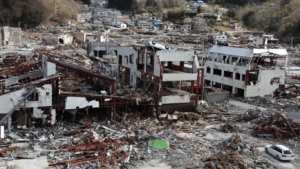The Canadian urban landscape is witnessing a profound transformation as old industrial districts undergo redevelopment into vibrant residential neighbourhoods. This trend, epitomized by cities like Hamilton, Ontario, represents a significant shift in urban planning and development strategies, reflecting changing economic realities and a growing demand for urban living spaces.
Historically, industrial districts served as the economic backbone of Canadian cities, hosting factories, warehouses, and shipping facilities. However, with the decline of manufacturing in the late 20th century, many of these areas fell into disuse, leaving behind vast tracts of underutilized and often contaminated land. The turn of the millennium marked a new chapter for these districts, as urban developers began to see the potential for repurposing these areas into mixed-use communities that blend residential, commercial, and recreational spaces.
Hamilton, once known as the “Steel Capital of Canada,” is a prime example of this urban renaissance. The city’s industrial bayfront area, characterized by its steel mills and heavy industry, has gradually been transformed into a desirable residential area. This change was spurred by both public and private investment, aiming to revitalize the city’s waterfront and attract new residents to the urban core.
The redevelopment process involves several key components, including environmental remediation to address the legacy of industrial pollution, the construction of new housing units ranging from affordable to luxury accommodations, and the establishment of commercial spaces to support local businesses. Moreover, the creation of green spaces and public amenities, such as parks and waterfront trails, has been crucial in enhancing the livability of these neighbourhoods.
One of the significant benefits of transforming industrial districts into residential areas is the positive impact on urban density. By encouraging people to live and work in closer proximity, cities can reduce reliance on cars, decrease traffic congestion, and lower carbon emissions.
Furthermore, the infusion of new residents supports local economies, revitalizing downtown cores and promoting a vibrant urban culture.
The challenges of redeveloping industrial districts are not insignificant, involving complex land use planning, significant financial investment, and the need to balance historic preservation with modern development. Yet, the outcomes seen in cities like Hamilton underscore the potential rewards: revitalized urban areas that cater to the needs of contemporary urban dwellers while preserving the architectural and cultural heritage of Canada’s industrial past.
As more Canadian cities embark on the journey of transforming their industrial districts, the narrative of urban redevelopment continues to evolve. These projects represent not just the physical rebuilding of spaces but a reimagining of urban living, signalling a new era for Canada’s post-industrial cities.





